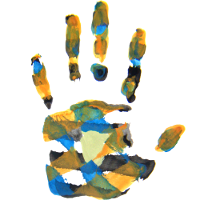(If you only use the web-interface, you don't need to know this, really.)
Every item you see in the navigation is a real folder in the file system. Only the topmost item is a link to the site's "home" (the db root). The label shown for this "home" link is configured in config.py (see below).
Your content starts right at the root folder of your ddd that you downloaded. But, ddd also has some internal files and caches, which are hidden. Here is a listing of all hidden files in the ddd root folder:
| .../ | This folder is called "...", which is (sort of) the reason for the name "ddd" -- "dot dot dot". It has
all of which you can edit to your needs (edits should take effect without a restart). The "..." folder is not published on the web (as configured in config.py, setting "DB_IGNORE"). Note: The sessions folder keeps sessions alive even if the server restarts. You can safely remove the session files whenever you see fit, and you can configure ddd to store sessions in RAM (see config.py). Note: rather don't remove the sessions folder itself, but remove "sessions/*", i.e. the files inside. ddd only creates the empty folder automatically if it is restarted. If the folder goes missing while ddd is running, it will fail until you re-create an empty sessions folder (or restart ddd). If you want to forcibly invalidate your running session, just append "?kill" to any ddd URL. |
| .scripts/ | This folder holds the style.css and java-scripts. It is published on the web, but does not appear in the navigation (hidden by the _hidden file). |
|
|
These are the low-resolution versions of your images. You can safely remove any of these whenever you see fit:
these are published on the web, but do not appear in the navigation (hidden by the _hidden file). |
| .trash/ | any items changed or removed via the web interface, sorted by time of removal. |
| .hg/ .hgignore |
ddd's development is tracked by a Mercurial repository. The .hg directory and the .hgignore file are Mercurial's repository and ignore-file. They are not published on the web (configured in config.py, DB_IGNORE). You can version your content changes using the existing Mercurial repos. |
| ddd-help/ | This is actually just a ddd content folder, like you would write one. But, it is hidden from the navigation by the _hidden file. So, if you like, you can keep ddd's help on your website and access it by this link whenever you forgot something. |
| _hidden | This is a "ddd control file", as you could use one in each of your content directories. Its job here is to hide ddd's special files and help from the navigation. |
To get started on your own content, use the web interface to create new folders and texts or copy some example content :)
have a lot of fun!


